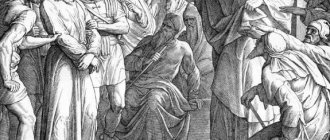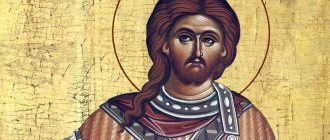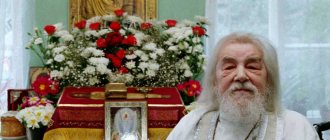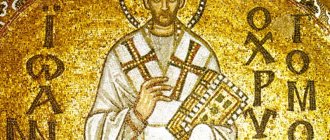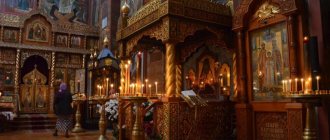Not to be confused with John X bar Shushan, Syrian Orthodox Patriarch of Antioch (r. 1063-1073).
| John X Yazigi | |
| Greek Orthodox Patriarch of Antioch and All the East | |
| Church | Greek Orthodox Church of Antioch |
| See | Antioch |
| Installed | February 10, 2013 |
| Predecessor | Ignatius IV of Antioch |
| Successor | Active |
| personal information | |
| Birth name | Yuhanna (John) Yazigi |
| Born | (1955-01-01) January 1, 1955 (age 65) Latakia, Syria |
| Residence | Mariamite Cathedral of Damascus, Syria |
| Alma mater | Tishreen University Balamanda University Aristotle University of Thessaloniki |
Patriarch John X
(Arabic: البطريرك يوحنا العاشر) (Born
Youhanna Yazigi
يوحنا يازجي; January 1, 1955) Primate of the Greek Orthodox Patriarchate of Antioch and the whole East.[1]
Life
Yuhanna Yazigi, a native ethnic Arab born in Latakia, Syria. His Syrian father, Munah Yazigi, an Arabic teacher, was from the village of Marmarita in Wadi an-Nasar and his Lebanese mother, Rose Moussi from Tripoli, Lebanon. He graduated from Tishreen University with a degree in civil engineering, then he received a degree in theology in 1978 from the Institute of Theology of St. John of Damascus at the University of Balamand. In 1983 he graduated from the Faculty of Theology at the Aristotle University of Thessaloniki with a focus on liturgics. He also holds a degree in Byzantine music from the Conservatory of Byzantine Music in Thessaloniki.
Notes
- ↑ 12345678
[www.antiochian.org/biography-his-beatitude-john-x-patriarch-antioch-and-all-east The Biography of His Beatitude John X, Patriarch of Antioch and All the East | Antiochian Orthodox Christian Archdiocese] - ↑ 123
[www.patriarchia.ru/db/text/2659122.html John X, His Beatitude Patriarch of Antioch and All the East (Yaziji) / Personalities / Patriarchia.ru] - steliasc.orthodoxws.com/files/englishbio.tif.pdf
- [www.dailystar.com.lb/News/Local-News/2012/Dec-17/198818-new-orthodox-patriarch-elected.ashx?fb_action_ids=10200401940597054&fb_action_types=og.likes&fb_source=aggregation&fb_aggregation_id=2883814812375 82#axzz2FJiW8nce New Orthodox patriarch elected ] (English)
- [araborthodoxy.blogspot.ru/2012/12/how-patriarch-john-x-yazigi-was-elected.html Notes on Arab Orthodoxy: How Patriarch John X Yazigi was Elected: Two Accounts]
- [www.pravoslavie.ru/news/59378.htm The enthronement of Patriarch of Antioch and All the East John X took place in Damascus / Pravoslavie.Ru]. Retrieved February 13, 2013. [www.webcitation.org/6ETdkKMx8 Archived from the original on February 16, 2013].
- [www.president.gov.ua/ru/documents/15924.html Decree of the President of Ukraine No. 395/2013 “On awarding the Order of Prince Yaroslav the Wise”]
- [www.patriarchia.ru/db/text/3538603.html A fraternal conversation between the Primates of the Antiochian and Russian Orthodox Churches took place]
- ↑ 12
[www.patriarchia.ru/db/text/3547773.html On January 25-30, the visit of His Beatitude Patriarch John X of Antioch to the Russian Orthodox Church took place] - [www.ifuocn.com/ International Public Foundation for the Unity of Orthodox Peoples]
Ordination and bishopric
He was ordained to the diaconate in 1979 and to the priesthood in 1983.
On January 24, 1995, he was ordained vicar bishop. Al-Husn. After the consecration, Bishop John immediately began work to revive the patriarchal monastery of St. George in Al-Humair, serving as abbot of the monastery from 1995–2002. Thanks to his efforts, the monastery became the center of spiritual and social life in the area.
From 1981 to 2008 he was a teacher of liturgy at Balamand Seminary. From 1989 to 1992, and then from 2001 to 2005, he was also rector of the seminary. During his second term as abbot, he was also abbot of the Balamand Monastery.
On June 17, 2008, it was elected capital of Western and Central Europe. Enthroned by the Patriarch. Ignatius IV of Antioch. On 19 August 2010, his title was changed to "Metropolitan of Europe".
Awards
- Order of Prince Yaroslav the Wise, 1st degree (Ukraine, July 27, 2013) - for outstanding church activities aimed at raising the authority of Orthodoxy in the world, and on the occasion of the celebration in Ukraine of the 1025th anniversary of the baptism of Kievan Rus
[7]. - Order of the Holy Equal-to-the-Apostles Grand Duke Vladimir, 1st degree (ROC, 2014)[8]
- Medal “Federation Council. 20 years" (Federation Council of the Federal Assembly of the Russian Federation, 2014)[9]
- Order of the Star of Bethlehem (Imperial Orthodox Palestine Society, 2014)[9]
- Award [www.ifuocn.com/ International Public Foundation for the Unity of Orthodox Peoples
] for 2014, the award ceremony took place at the Cathedral Cathedral of Christ the Savior in Moscow on February 20, 2015, with the participation of His Holiness, His Holiness Patriarch Kirill of Moscow and All Russia[10]
Patriarchy
On December 17, 2012, twelve days after the death of the previous Patriarch Ignatius IV of Antioch, John Jazigi was elected. Patriarch of Antioch.[2] This was unexpected, since Yazigi had been a member of the Holy Synod for just under 5 years, having been elected to the Metropolitan See of Western and Central Europe in 2008. The normal procedure for electing a Patriarch requires that all candidates have been a member of the Holy Synod for at least 5 years,[3] but reports indicate that the synod agreed to waive this rule for this election.[4] Patriarch John X arrived Damascus Syria on December 20, 2012 for prayers at the Mariamite Cathedral of Damascus, where he also received congratulations from members, civil authorities (including the Minister of Presidential Affairs of the Syrian Arab Republic, Mansour Fadlallah Azzam, on behalf of the President of Syria) and other well-wishers . On Sunday, December 23, 2012, the solemn Divine Liturgy of installation and thanksgiving was offered by the newly elected Patriarch.[5]
In his installation sermon, Patriarch John X emphasized that he rejects Western intervention in the Syrian civil war as well as its intention to promote peaceful coexistence with Muslims and other Syrians. Ambassador of the Russian Federation In Damascus Azmatulla Kulmohammadov emphasized Russia's strong support for Syrian national unity, national peace and the end of the civil war. The Patriarch of the Antiochian Orthodox Church responded by calling on all Syrian people to defend their national unity and fight instability and insecurity.[6]
On February 10, 2013, John X was officially enthroned as Metropolitan Bishop of Antioch (the usual see of the Patriarch of Antioch), ceasing to be Metropolitan of Europe.[7] This event marks the beginning of the patriarchal reign of John X. The enthronement took place in the main church of the See of Antioch, the Mariamite Cathedral of Damascus, as required by tradition. However, due to the current civil war in Syria, service has been limited. The second enthronement took place on February 17, 2013 at St. Nicholas Cathedral. Ashrafieh (one of Beirut's oldest Christian neighborhoods), visited by Antiochian Orthodox Christians from all over the world, especially the President and Prime Minister of Lebanon, and the Patriarch of the Maronite Catholic Church. During his sermon, the Patriarch promised that the Antioch Church will conduct dialogue on the basis of mutual respect. He also promised to continue the Patriarchate's assistance to all families, children and women affected by the conflict. On cooperation with the Muslim community, he said: “Muslims are partners in the country and our ties with them go beyond coexistence; we share with them the responsibility to build a [better] future and confront dangers.”[8]
John, Archbishop Antiochian
John
, archbishop Antiochian, one of the most prominent figures of the Nestorian era. Nothing is known about his life before this time, and there is no evidence for the opinion (Cave) that he was brought up together with Nestorius and Theodoret in the monastery of St. Euprepius, in the suburbs of Antioch. Kirill al. (Labbe III, 1050) and Dioscorus (Theodoreti epist. 83: Migne gr. LXXXIII, 1268; cf. in the Syrian acts of the robber council: Hoffmann, Verhandlungen der Kirchenversammlung zu Ephesus, Kiel 1873, S. 69. 87–89; Martin, Actes du brigandage d'Ephèse, Amiens 1844, p. 161) speak with equal praise about the theological education and dogmatic-canonical knowledge of John, but only a fragment of a sermon in Chalcedon has survived from him, and the fact that even such an important letter from him to Nestorius, assimilated to Theodoret, seems to indicate that Ioannov’s literary reputation was not high. – Having occupied the see of Antioch after Theodotus in 429, John had great authority among the bishops of the “East”, who – according to Acacius of Berea (Labbe III, 386) – rejoiced and mutually welcomed themselves with such a leader. Naturally, it was not by his hierarchical position alone that he found himself in the very center of the Nestorian whirlpool, when Pope Celestine, having condemned the false teachings of Nestorius at a local council in August 430, reported through the Alexandrian deacon Posidonius (Labbe III, 379. Mansi IU, 10.48.1049 Acts of the Ecumenical Assembly I, 411–414 and cf. Migne gr. LХХУІІ, 93) about these decisions and the primate of Antioch (together with Juvenal of Jerusalem, Rufus of Thessalonica and Flavian of Philippians), to which Cyril deliberately invited him al. (Labbe III, 379. Mansi IV, 1049. 1052. Migne gr. LXXVII, 93. 96). John preferred to turn to peaceful means and sent (together with the message of Celestine and Cyril al.) on behalf of ( - those gathered for the dedication of the first - ) Macarius of Laodicea, Archelaus, Apringius, Eliadas and Melchius to Constantinople a letter in which he energetically exhorted Nestorius to protect the church unity, expressing firm confidence in the dogmatic correctness (Labbe III, 390 ff. Mansi IV, 1061–1069. Migne gr. LXXVII, 1449–1457. Acts of the whole. Sob. I, 434–435) of the capital archpastor. In the same sense - to influence the latter - John also wrote especially to the committee Irenaeus and Musaeus of Antaras and Hellas of Tarsus, who were in Constantinople. Nestorius responded with a polite but stubborn refusal, appealing to the court of the council. Then Kirill al. - after a council consideration - at the end of 430 he sent a message to the capital with 12 anathematisms against Nestorius, who forwarded this document to John (Migne gr. LXXXIV, 580 and cf. Liberati Breviar. 4: Migne lat. LXVIII, 976). “Easterns”, not without reason, saw here accusations against the entire Antiochian theology, and this connection between a fundamental issue and a personal one complicated the whole matter to the extreme, introducing unnecessary aggravation into it. John handed over Cyril's Epistle for analysis to Andrew of Samosata (Mansi V, 20 f. Migne gr. LXXVI, 306 f. Acts. All. Collection II, 47–127) and Theodoret (Migne gr. LXXXIII, 1413. LXXXVI, 389. Mansi V, 84. 85. Acts of the entire collection II, 125. 126), of which the second, finding Apollinarianism here, even doubted that it belonged to the Alexandrian hierarch (Migne gr. LXXXIV, 580). By an imperial decree of November 18, 430, a council was appointed in Ephesus on the day of Pentecost, but John, who went with a small number of primates from the Syrian churches, could not meet the specified date of June 7, 431 and, as a warning, sent ahead several energetic members (by the way, Theodorit), who sent a special message to Cyril al. and Juvenalia Jerusalem. asked to wait for the “Antiochians.” They did not respect it and on Monday, June 22, they opened a cathedral in the Church of the Most Holy. Mary, the “eastern” ones refused to participate and at a private meeting decided to protest to Emperor Theodosius II. Nestorius had already been condemned when John and 14 bishops arrived in Ephesus on Friday, June 26. Invitational deputations from the cathedral were not accepted. The ruler of Antioch, together with 43 bishops, formed a special council (copsiliabulum), which proclaimed the deposition of Cyril al. and Memnon of Ephesus, and excommunicated their adherents and deprived them of church communion until correction (Labbe III, 596. 637. 657. 654. Mansi IV, 1265–1269. Acts of all. Sob. I, 652–658), recognizing “unjust condemnation against the throne of the city of Constantinople, which reigns over the cities” (Mansi IV, 1380. Acts of all. Sob. 1, 788). His opponents were also quick to excommunicate John. The “Easterns” solemnly approved the Nicene confession and sent it to them through the committee of John. Theodosius had a special (compiled, perhaps, by Theodoret: see Glubokovsky I, 90 ff.) definition of faith (Migne gr. LXXXIII, 1460. Mansi IV, 1372. Acts of the whole. Sob. I, 778), as sent out by them and many other messages to various persons. Theodosius wanted to satisfy both sides and, through the dignitary Palladius, confirmed the deposition of Nestorius, Cyril and Memnon, instructing the tribune John to calm the warring parties. This mission was unsuccessful. The “Antiochians” had four more meetings and called on the opponents to come to an agreement, but the conditions were unacceptable (“destroy everything written against Nestorius”...) and were rejected (Mansi IV, 1404 and 1398; V, 348. Acts of all. Sob. I, 820 and 799–800; II, 407–408. Epist. s. Cyr. 48 (42): Migne gr. LXXVII, 249). And the council, reinforced by the arrival of the legates of Pope Celestine, invited John three times and, not achieving the desired result, excommunicated him and like-minded people from church communion and declared him deprived of his bishopric. With such difficulties, the emperor summoned 8 deputies from both parties; among the “eastern” were John and Theodoret. The delegates were supposed to live in Chalcedon, where they arrived on September 11, 431. There were five discussions in the presence of Theodosius, to whom three protests were submitted by the “Antiochians”, who wrote - in addition - to the western bishops of Mediolan, Aquileia and Ravenna against Cyril's "chapters", supposedly full of Apollinarianism (Theodoreti epist. 112: Migne gr. LXXXIII, 1312). John directly spoke out in favor of Nestorius's Orthodoxy and defended it. However, the emperor abruptly changed his previous vacillating policy, ordering Nestorius to retire to “his place of residence,” that is, probably to the Antioch monastery of St. Euprepius, and Maximian was elected to the see of Constantinople, while Cyril and Memnon were restored to all their rights, although Theodosius declared about the “eastern” that “while he was alive, he could not condemn them, for they had not been convicted of anything before him.” (Migne gr. LXXXIV, 632). With a heavy feeling, the “Syrians” left back (it seems at the end of 431), already on the way they experienced an unkind reception in Ancyra in Galatia - due to warnings from the capital (ibid. 641) - and in Tarsus (the city of the first Cilicia) they held their cathedral, where mutually pledged to stand firmly for Nestorius and - together with Cyril and Memnon - deposed all the Orthodox deputies who were in Chalkdon (ibid. 674), which determination was again approved by them in Antioch (see also Migne gr. LXXXIII, 1490. LXXXIV, 826 .Acts sun, collection II, 449. Socrates Ts. I. 7, 34. Liberati Breviar. 6: Migne lat. LXVIII, 981), and then visited the highly revered in the “East” Acacius of Vera (Migne gr. LXXXIV, 647–648). John was at first adamant in his opposition, campaigned a lot throughout the “East” (Migne gr. LXXXIV, 743.798 and cf. 654–656) and allegedly showed Nestorius special veneration (Evagr. Ts.I. 1, 7). But John did not last long. Celestine, before his death (in June 432), expressed disapproval of Maximian for the deposition of 4 “eastern” bishops (Helladius of Tarsus, Eutherius of Tyana, Imerius of Nicomedia and Dorotheus of Marcianopolis), inviting him to moderation - especially in relation to John. At that time, the local council of Constantinople - on behalf of the emperor - formulated (in 432) that for the sake of peace the adoption of a single faith is required, and the primate of Antioch must anathematize Nestorius and his wicked dogmas (Mansi V, 277-281. Migne gr. LXXVII, 1457 –1461. Acts sun, collection II, 344–347). Then Theodosius, who especially asked for the assistance of Simeon the Stylite and Acacius of Vera (Mansi V, 281–284. Migne gr. LXXXIV, .656–658. LXXVII, 1448. Acts of the whole. Sob. II, 347–349), sent with the tribune and the notary Aristolaus ordered the ruler of Antioch to appear in Nicomedia for negotiations with Cyril al. (Mansi V, 277–281. Migne gr. LXXVII, 1457–1461. Act. vs. sob. I, 344–347). John convened a council in Antioch (Alexander of Hierapolis in Euphrates, Macarius Laodice. and Theodoret), who decided to adhere to the Nicene faith (cf. Migne gr. LXXXIV, 659), went to Veria to Acacius (Mansi V, 312. Migne gr. LXXVII, 184. Acts of the entire collection II, 383), and on behalf of the latter (through Aristolaus and Master Maximus) forwarded to Cyril al. the message has precisely this content, rejecting any additions beyond the Nicene confession (Migne gr. LXXXIV, 658–659). Kirill al. he rightly saw here an indirect condemnation of himself and answered Akaki. a categorical refusal to agree on such terms (Migne gr. LXXXIV, 661–664. LXXVII, 158–161). Many reacted to this Cyril’s letter very harshly, but John and Acacius (not without the participation of Theodoret) looked more calmly and at a meeting in Veria they decided to send Paul of Emesa to Alexandria in December 432 with a letter of recommendation to Cyril (Migne gr. LXXXIV, 686 and cf. 720. 689–691), but in the Epistle of John the latter found a new insult for himself (Mansi V, 312. 349. Migne gr. LXXVII, 185. 252. Acts of all. Sob. II, 384. 409). Then Paul took this letter back, anathematized Nestorius in writing, recognized Maximian and asked to accept this act as if on behalf of all the archpastors of the “East” (Mansi V, 349. Migne gr. LXXVII, 252. Acts of the whole assembly II, 409) . This was done according to the secret instructions of John (Migne gr. LXXXIV, 691), who strongly believed in the diplomatic abilities of the Emesian bishop (ibid. 687). However, Kirill al. again did not agree and demanded that John set out in writing what was stated by his delegate (Mansi V, 323. Migne gr. LXXVII, 185). Aristolaus sent an order in this spirit to Antioch (Migne gr. LXXXIV, 827), but in the “East” the new claims of Cyril al. were met with extreme displeasure. The Council of Antioch spoke out so decisively that they tried to attract noble persons from Alexandria to the capital and, among other things, Augusta Pulcheria in order to put pressure on John (ibid, 827.829). Two clerics Cassius and Ammonius were sent to Antioch - together with Aristolaus - who were supposed to give conciliatory messages to John if he signed a sheet about the deposition of Nestorius and with approval of the election of Maximian (ibid. 830). Aristolaus tried to persuade John even with threats that - if he persisted - he would declare him the only culprit of discord (ibid. 700 and Migne gr. LXXVII, 169), but the ruler of Antioch was already convinced of the sufficiently sincere orthodoxy of Cyril al., which is why he accepted all the proposals and, as a sign of communication, sent a special letter to the Alexandrian hierarch (Mansi V, 285. 289–292. Migne gr. LXXVII, 164–165. 169–173. Acts sun, collection II, 350–351. 355–359), who responded enthusiastically message, where he directly proclaimed that the mediastinum was destroyed (Mansi V, 301–309. VII, 655–673. Migne gr. LXXVII, 173–181. Acts. vs. collection P, 372–380. III, 219–227) . This was at the beginning of 433. John hastened to bring the “eastern” to the agreement, however, Theodoret, notified by him (Migne gr. LXXXIV, 701–702), did not share his complete satisfaction and asked to insist on the complete rehabilitation of all injured like-minded people (ibid. 700– 701). John fulfilled this request, although he generally considered the matter settled (ibid, 705). Most of the “Easterns” broke away from him, and John - not without suggestions from Constantinople - began to resort to drastic measures, despite the warnings of Theodoret, so that the name of Nestorius was not touched, and everyone simply agreed on the basis of recognition of a single faith, equally proclaimed in Egypt and in the “East” (ibid. 709–711 and cpl Migne gr. LXXXUI, 1484). If John at first yielded to such advice (Migne gr. LXXXIV, 742), then all the more energetically he began to demand unconditional submission to the “union” he had concluded. As a result from. Euphratisia, both Cilicia, the second Cappadocia, Bithynia, Moisia and Thessaly were completely separated from him (ibid. 713). In turn, the ruler of Antioch treated the protesters as schismatics, eliminated the dissatisfied (ibid. 742), for example, Aviv of Dolichi and Aquilin of Varvalis, replacing them with Athanasius and Marinian (Synodicum ch. 133. 134. 149. 156. 165 and 190 in Migne gr. LXXXIV), and allowed other injustices. The dissatisfied addressed with a district message to the bishops of Syria, Cilicia and Cappadocia, accusing John of recognizing the Apollinarian heretic (Cyril), of condemning Nestorius and of appropriating the right of consecration in foreign church districts - allegedly even with interest (ibid. 743–744), and then they sent complaints to Theodosius’s sisters Augustus Pulcheria and Marina (ibid. 750–751). The opposing party also acted, of course, in the opposite direction and with complete success: a decree was soon received, by virtue of which the military leader Dionysius authorized the committee and vicar Titus to propose to Hellas of Tarsus, Maximus of Anazarvia, Alexander of Hierapolis and Theodoret, so that they would either reconcile with John, or left their departments (ibid. 758–759). The stubborn did not give up, and in Antioch they worked out new conditions (cf. ibid. 763), which Theodoret found quite acceptable and defended (ibid. 763–763. 766 and Migne gr. LXXXIV, 1488–1489) from the objections of the adamant Alexander, bishop. (Migne gr. LXXX IV, 764–765. 767). The unity was also facilitated by the fact that Nestorius’s successor, Maximian, rejected by the “Easterns,” died in 434 and was replaced in April by Proclus (Socrates Ts. I. 7, 40), who also invited the “Syrians” to an alliance with the obligation to anathematize Nestorius (Migne gr . LXXXИY, 765–766. LXY, 885–886). Theodoret entered into communication with John (Migne gr. LXXXIV, 774–776). The latter instructed the bishop of Cyrrhus to use all means to persuade those who had separated to reconcile (ibid. 738), and he energetically invited both parties to mutual concessions, without defeating the most stubborn. Theodoret asked for leniency from John, but the Antiochian hierarch preferred severity, expelling Meletius of Mopsuestine from his diocesan city with the help of military force (ibid. 793), and appealed for civil punishments from the capital, from where (it seems in 435) they were received severe instructions on the exile of Alexander the bishop. in Famosinum egyptica, Meletia mopsuest. in Armenian Melitina, etc. (ibid. 803–804). This even alienated the moderates from John, but he continued to appeal to administrative influence - in solidarity with Kirill al. (ibid, 834–836). Such a mission was entrusted to the above-mentioned tribune Aristolaus, who showed special bureaucratic zeal, punished others (for example, Alexander the bishop and like-minded people who left the departments already in 435), but managed to attract others, as was the case with the shepherds of the first Cilicia (ibid. 805) in 436 (ibid. 811). Around this time (due to the hostile jealousy of Rabbi of Edessa and with the stimulating influence of Cyril al.), a dispute broke out over Theodore of Mopsuestia (and Diodorus of Tarsus). John came to the defense of the Antiochian luminaries and thereby won over the “Easterns” in his favor. The moderate “Syrians” (including Theodoret) sided with him, which he triumphantly notified to Proclus the Constantipop. (ibid. 810–812), who had therefore previously published a conciliatory “tomos” to the Armenians about faith on the subject (Mansi Y, 421 ff. Migne gr. LXY, 856 ff.). Kirill al. I also found more moderation regarding Theodore Mopsuest. and before Proclus (Mansi IX, 410–412. Migne gr. LXXYn, 344–345. Acts. vs. Sob. V, 401–404) and before John (Facundi Pro dcfens. 8, 5: Migne lat. LXVII, 728 Mansi IX, 264. Acts of the whole collection V, 168–170). The “Easterns” sent a petition to the emperor for the “restoration of peace” (Liberati Breviarium 10: Migne lat. LXVIII, 991–992. Facundi Pro defens. 2, 2. 8. 3. 5. 12, 1: Migne lat. LXVII, 563. 716–717, 727–728. 833), and Theodosius II special; by decree ordered to stop the case of Theodore mopsuest, (Synodicon cap. 219: Migne gr. LXXXIV, 849–850, Facundi Pro defens. 8, 3: Migne lat. LXVII, 717–718. Liberati Breviar. 10: Migne lat. LXVII, 992). So, from 437, peace gradually settled in the “East”, and at the same time John of Antioch, whom only storms and unrest brought to the forefront of history, disappears from our sight. He died after 13 years of episcopacy in 441 or 442 (Theodoreti epist. 83: Migne gr. LXXXIII, 1268), having been replaced at the Antiochian see by his nephew Domnus (Acta sanctor., Jannuar. t. II, 672. 675; cf. Le Quien, Oriens christianus II, 721). John was not an exceptional person, and his policies were not always flawless. But he was a sincere and ardent peacemaker and served a lot for the good of the Church in extremely troubled times. How beneficial the reconciling and restraining influence of John was can be seen from the fact that soon after his death new turmoil began in the “East”, which for a long time disturbed the peace of the entire Christian world.
N.N.G.
